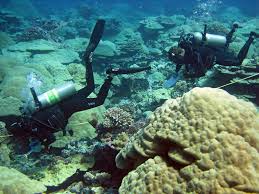Even though scientists have made wonderful discoveries over the course of the last few years, there are still parts of the planet that they are just now starting to learn about. Recently, scientists from the Australian National University discovered an underwater mountain and volcanic system that may provide clues as to how whales navigate on their annual migration routes.
Scientists from the Australian National University were studying a region of the ocean off of the coast of Tasmania. They had the use for a 25 day period of an underwater research vessel owned by the Commonwealth Scientific and Industrial Research Organization (CSIRO). The vessel made a startling discovery.
The vessel discovered a network of underwater mountains and volcanoes at a depth of about 5,000 meters. Some of the mountains reached up to over 3,000 meters from the oceans floor. Some of the peaks were sharp like a land mountain. Other mountainous structures had conical tops that have led scientists to believe that the entire underwater structure was created by volcanic activity in the earth’s past.
While the research team was conducting their investigations, they noticed that they were in the vicinity of nearly 30 humpback whales and as many as 80 pilot whales. The researchers also noted that multiple seabirds were in the areas. The area is frequently visited by multiple species of albatross and petrel. This has led the researchers to believe that the area may be what is known as a “biological hotspot.”
Scientists think that the area might serve as a navigational signpost for whales as they travel between their summer and winter breeding grounds.
During the months of November and December, scientists are going to come back to do more extensive studies of the area. They are interested to find out more about why so many whales and seabirds are congregating in the area.






